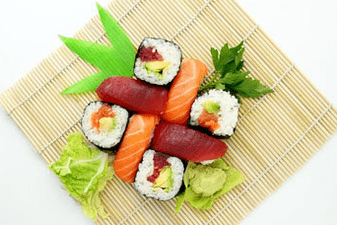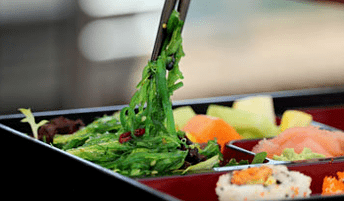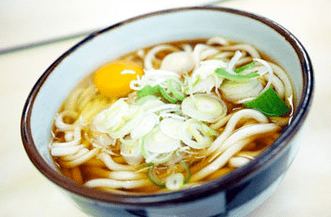The Japanese are still one of the worst people in the world.They show that we can take a look at their diet.
If we want to lose weight we often start with serious diets in several days or weeks or not executed in a week or week.In fact, it's so simple: Let's look at the worst people - in Japan.
They respect and enjoy the food there.

Japanese diet
Travel to Japan.Products selection
Toosquirrel: The main items of the Japanese diet are fish, rice and vegetables.As well as soybeans and fruits.
This is like this after the exam
- Rich with protein,
- Low -Fat
- And gluten-free diet.
- FishIt contains many Omega-3 fatty acid that is useful.
- VegetableContains the necessary vitamins and fill their stomach well.
- Don't be afraid of carbohydrates: At first glance, it appears with a carbohydrate phobia that looks like an incredible amount of white rice in Japan.Obviously, this is not very harmful to Flae this defect.RiceDoes not contain gluten and contain little fat.
- Soupand fertilized dairy products.They eat hard food in JapanDairy products.
- AlthoughgrainSometimes they are used, for example, in the form of pasta, they are not the main food product.
- MeatThey eat less than fish.
- But like JapaneseFermented productsLike miso or kimchi.In these, there are probiotics that are useful for the intestines.This, in turn plays a big role in losing weight.Another thing we can adopt from Japanese: They eat a lot of soup for breakfast.
Travel to Japan.Methods of cooking
Eating in Japan is mainly steamed, stew or fried.All these types of preparations are almost non-lean.
Of course, there is also a fried meal, for example, a popular tempo, but then only used as a small amount of side meals.The presentation and design of the food in Japan is also important.Asian products contribute useful, delicious and weight loss.
In Japanese, consciously eating
Eating in Japan is considered an independent movement that you have to concentrate.Eat should be eaten slowly and consciously and enjoy.Therefore, it does not eat "by the way" or "go".That is, neither walking, nor during the subway, nor work during work.Of course, this is not prohibited, but in fact, a diet should be consciously, especially in weight loss.A felt sensation of a saturation by the way of being absorbed.Work days and school days in Japan can be very long, it also means that there are longer breaks to eat.Alsoin partsIn less Japan.You won't see a plate overloaded with food.

Weight comes with Fast Food
Slow food (slow food)In Japan on Trend.If you simulate this, you can not be hungry, deliberately.However, it should be noted that the more and more in Japan will appear from the west of new trends: Fast food, for example.Previous habits in the meal disappear ...
There are the results of this: the Japanese recover when they are goodbye with the traditional dish!Nevertheless, the country also fights very harshly, and in 2009 the decisive measures taken against overweight reasons in Japan.Medical tests are regularly implemented in all municipalities and large companies.Companies must pay more for health insurance, if employees should pay more than overweight or high blood pressure, high blood lipids or blood sugar.Taking into account such measures, many Japanese prefer to return to Miso-SUPA in the fish instead of morning toasts.
How long does the Japanese diet last?
Time and possible weight loss loss can change.The Japanese diet should be observed at least four weeks.This time is enough to stimulate fat burning.There are lost people3rdforScorpionA kilogram of kilograms with a diet for four weeks.If you start a sports program, the result may be further increased.
- Many vegetables and fibers are used during the diet.Provides a dietary plan1200 calorieson the day.
- Basically, rice, fish and vegetables are offered.
- Drinks: Very green tea and water.
- Notice to cook fresh - no ready-made products.
- Sport or exercise for endurance.
- Plan enough time to eat.
Consult a doctor.- Any change in the diet may cause diseases.The reasons mainly due to mental and low-calorie consumption in nature.Consult a doctor if symptoms are preserved.
Advantages of a Japanese diet
Japanese diet- This is a healthy mixed diet.A balanced composition of fresh products and containers is paid.
The shortcomings of the Japanese diet
- Low-calorie consumption, it can cause the feeling of hunger and malaise.The total calorie consumption for people overweight can also be very low.
- For those used to cook fresh containers, fast food, it can be tedious for a long time.
- Spontaneous trips in a cafe or restaurant with friends are confronted with a choice.
- The diet requires a lot of endurance.

Those who successfully complete the Japanese diet will be rewarded with more weight loss.
If you want to see great success, follow the sports program.Be sure to consume enough protein.Otherwise, you cannot increase the muscle mass.In the worst case, you will lose your muscles.You need to avoid bad sports and other large loads.
Japanese diet.Menu
All food should be fresh.The dishes are beautifully cooked, you can play with flowers.Eating and eating (slow absorption of food) is also very important.
Breakfast
- 1 tangerine
- 1 cup of miso.This typical Japanese soup gives a lot of energy, but it is low fat.By the way, it consists of a fish broth, tofu, algae, miso (fragrant soyphala) and green onions.The recipe below!
- 1 cup of green tea
Lunch
- No. 1 Land (raw fish from rice), with soy sauce
- a cup of noodles noodles
- 1 apple
- A cup of green tea
Lunch
- 1 Sashimi (Dinner of other fish), soy sauce and Basabi (be careful, this paste made of water curse is very sharp)
- 1 cup of whole grain rice
- 1 orange
- A cup of green tea
In addition, trainings (bicycle riding or walk), as well as simple, small things are recommended.
Now about "good old times" - let's travel on time in 1975
The Japanese is one of the most healthy people in the world, as a result of exemplary nutrition during this period.Currently, Nippon.com has published a research that justifies the causes of the health of Japanese health.Nutritionists have learned Japan's eating habits for more than half a century.Conclusion:In 1975, Japanese culinary habits were assessed with the highest assessment.
Why 1975 Japanese diet was considered a model of diets
For many decades, Japanese culture brought the Western world, especially Western authority, and brought diseases from the country as atherosclerosis and diabetes.The Japanese diet in mice tested for several decades - was tested in 2005, 1975 and 1960s.
Conclusion:Mice had been the best health condition with a diet plan in Japan since 1975.The group of these mice had the lowest risk of diabetes and the lowest risk of the healthy liver.
Reason:The average Japanese diet plan contains a large share in vegetables, fruits, algae and seafood in this year.In addition, in 1975, diet was dominated by various methods of fermented spices and more different herbs.In addition, the consumption of juices and fresh soft drinks in Japan was not as common as today - both drinks are considered harmful to a large amount of health.
After the 48-week period, researchers found a better memory of mice equipped with a Japanese diet in 1975 and a better memory of the mice observed by the 2005 diet.
But is it possible to convey these results to people?Sendai, a study conducted by the Japanese University of the University of Tokhoki, the "Committee for the Research Ethics" Der Tōhoku Uni, Sendai, 1975 proved that the 1975 diet was the same useful impact on people.A group of participants followed by the 1975 diet in the 28-day period exceeded the indicators of the 2005 food plan.In the first group, both cholesterol and diabetes were low.By combining a training three times a week, 1975 diet decreased stress and growing tolerance in the group of 20-30 years.In general, the Japanese style can help reduce the level of lipids in the blood and visceral oil, which is harmful to health due to metabolic activity.
Sums up, we can say1975 capacity of JapanCompared to modern nutrition in Japan - and typical for the West, today food habits are more useful in many ways.It reduces the risk of healthy lifestyle and nutrition, reduces the risk of cholesterol in a long run, reduces blood lipids and visceral oils, lose weight positive side effects.

The 1975 diet encourages weight loss, along with regular training.
- Diversity:Daily menus usually consist of many small various dishes served with soup and rice instead of a large main course.
- Preparation:The most popular most popular type of cooking in 1975 was boiled, steamed or raw and grilled.Deep fries and frying was less used.This form of preparation is the result of lost in the heat of the most important nutritional values.For example, fatty fish like COD contains important omega-3 fatty acids.Once up once, there are only one-third of the original oils compared to raw fish, such as fish, Sashimi.
- Ingredients:The 1975 diet is especially rich in soy products, seafood, tubers and green and yellow vegetables (gherkins), fruits, seaweeds, mushrooms and green tea.In 1975, eggs, dairy products and meat were also consumed, but only mild.
- Spices:Salt and sugar, soy sauce, vinegar and memories are used for flavor to fermented spices and fish stocks.
Miso soupJapan is a national dish, prepare quickly and very delicious.The main recipe contains very few items - you can enrich as you wish.Miso soup is often eaten for breakfast in Japan, as an appetite or side dish.Soup with filling is becoming a basic meal.
You only need two items to make the soup base:
Misopa-This spicy paste depends on different grains such as rice or barley - depending on soybeans and - diversity.The content is found in salty and papers using things called Koji Mold.There are open and dark, sweet and spicy miso pastes.Thus, the choice of diversity has a great effect on the taste of miso soup.The misopaste is very useful, because the fermentation process includes the problematic lactic acid bacteria.Dasha:The Japanese fish broth is made of battlefield battles and dried bonito flakes of seaweed (Machterel or Tuna type: "Katsuo-Busi" - "Katsuo-Busi").If you want to cook miso vegetarian soup, you can use mushrooms, mushrooms, mushrooms, Maitaka or Enoki, instead of dried Shiitaka and Bonito Lopakoz.
Miso Soup: The main recipe
You will need the following items for the four small parts of the miso soup:
- 750 millilitr dasha
- about two or three tablespoons miso-pasta
Use the Miso-Post of your choice: In addition to soy, Shiro-Miso also contains rice and has a pretty soft and sweet taste.The dark range of Mison, such as genmai or hatcho miso, is more spicy.
How to cook miso soup
-
Hot Dasha's broth - but don't cook.
-
Go to the miso-pass and go through the hand and mix well with the broth.First, use only part of the Mison, which is a very salty taste of Mison.Test the soup and add more to miso pastes if necessary.
-
A few minutes before the service, add the components of your choice within a few minutes.Serve in containers in finished soup.By the way, in Japan, the soup is eaten with sticks to eat, then the broth is drunk from the cup.
Miso soup recipe: additives and spices
You can prepare different ingredients for your soup.It is very noted that the substances in Japan are not evenly cut off - so the finished soup looks very nice.Several examples to enrich the soup miso:
- Baked rice or pasted (eg buckwheat dogs noodles)
- Tofu sliced by cubes
- Cut onions or green onions, cut into thin rings
- Mushrooms, finely chopped
- Kohlrabi, finely chopped
- Snow units
- Leaf spinach, park choi or mangold
- Fried vegetables like broccoli, pepper or carrot

Although the soup of the Mison soup is very sharp, it can be spices with several spices.For example:
- soy sauce
- Like a little lime
- Japanese Wostershire Sauce
- Several drops sesame oil
- A little dust of ginger and / or chili pepper.
- You can also leave fresh ginger and / or pepper in thin slices and soup.
Advice:You will have to go to an Asian store for many items, but you can buy fresh onions, mushrooms, Kohlrabi and CO in regional markets.
Tofu and other soy products are also produced in other countries.
JapaneseEat:
- Rice, fish (raw and baked), vegetables, Hamba
- Minor parts
- Different foods (different 30 days)
- For breakfast soup, fish, rice, vegetables
- Fresh seasonal raw products
Almost desserts don't eat bread
Drink mainly green tea
Fry in fat, use only a little vegetable oil to fry
They go a lot and bike
Top three products
Rice / fish (algae) / soy (tofu)
Drink: Green tea
And another mystery from Japan
Want to be thin on 12 cm waist?- If so, do the following respiratory training!
Important!
- Space daily!
- Speech before breakfast!
- Never hurry up!
- Legs put each other in a relaxed distance.Of course, the knees "see".
- Move the body's weight to the back leg, correct the front.
- Breathe 3 seconds.
- Give up 7 seconds.Relax the muscles.Grow your hands.
Exercise at the beginning of 3 minutes, then increase your 10 minutes.














































































